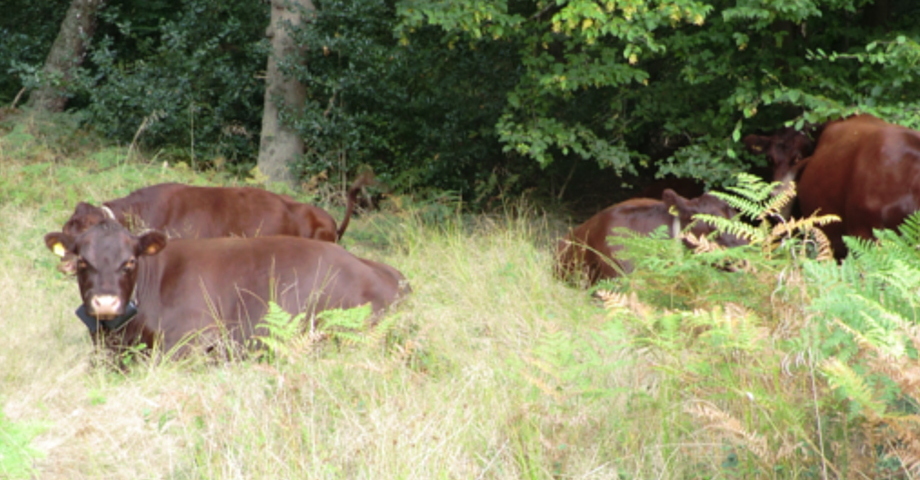
Prairies sous bois et parcs boisés au Royaume-Uni
Description du système
Au RU, les systèmes agroforestiers de Haute Valeur Naturelle et Culturell (High Natural and Cultural Value, HNCV) a été interprété comme les systèmes de pâtures sous bois et les parcs boisés. Le RU a une riche histoire de territoires ouverts (grazed common lands) et de parcs boisés plus formels. Ces systèmes peuvent être caractérisés comme étant de vastes étendues ouvertes peuplées d'arbres souvent anciens, répartis sur une prairie pâturée par des bovins. Ces sytèmes peuvent être vieux de plusieurs siècles et contiennent souvent une faune et une flore très particulière et spécialisée à grande valeur de conservation.
Si vous souhaitez en savoir plus sur les actions de ce groupe, veuillez contacter le Dr. Matt Upson at Cranfield University.
Première réunion des parties-prenantes.
La première réunion du groupe "prairies sous bois et et parcs boisés" s'est tenue le 23 septembre 2014 au Centre des Visiteurs d'Epping Forest, des prairies communales pâturées par des bovins sous des arbres entretenus depuis 800 ans.
Le groupe initial consistait prédominément de décideurs politiques et d'actuers de la profession ayant un intérêt pour les prairies sous bois et les parcs arborés d'un point de vue de la conservation. D'autres réunions sont prévues dans le futur afin d'augmenter la représentation des agriculteurs et utilisateurs de cette pratique.
La réunion a identifié (parmis d'autres choses) un besoin de mieux comprendre les systèmes de prairies sous bois et de parcs arborés parmis tous les secteurs au RU, ainsi que de se pencher sur l'image de ces systèmes. Une innovation ptentielle importante résulatnt de cette réunion fut l'utilisation de la "barrière invisible" dont un des pionniers fut le Dr Jeremy Dagley d'Epping Forest.
Voir ci-dessous pour une vidéo du Dr Dagley expliquant ce système.
Télécharger le rapport initial des parties-prenantes
Télécharger le rapport initial du protocole de Recherche et Développement
Download the system description
A system description and research on the sustainability of the tree population within Epping Forest (before and after restoration) was produced in January 2016.
Epping Forest has produced the following video decsribing how invisible fencing systems can be used for cattle grazing on public open access sites and commons.
Lessons learnt
In July 2017, staff at Cranfield University summarised the lessons learnt with the UK stakeholder group focused on wood pastures and parklands in the UK. The research focused on i) wood pasture restoration including the use of a management tool, ii) an assessment of the economics of ”invisible fencing” and iii) an assessment of the effect on soil carbon of new wood pasture establishment on grassland.
The study of wood pasture restoration showed that the greatest number of plant species was found in the restored ancient wood pasture i.e. the restoration which involved pollarding and opening up the woodland was successful in achieving its biodiversity objective. The study also showed that it was possible to use the “Kirby” model to make predictions regarding the future age distributions of different tree species.
The economic analysis suggested that the cost of single loop invisible fencing covering about 25 ha is about 44% greater than with a wooden fence over a 30 year period. Hence the invisible fencing system is likely to be restricted to situations where unhindered access for the general public is valued highly.
Lastly in a study on a wood pasture (reported by Upson et al. 2016) established in England on grassland 14 years ago, the organic carbon content in the top 10 cm was reduced by 10% in the silvopastoral tree plots, and 22% in a conventional woodland, compared to the pasture without trees. Although the greatest total carbon storage (including above ground carbon) occurred in the woodland, the carbon storage in the new wood pasture system (63.4 Mg ha-1) was greater than the equivalent pro-rata value if the trees and pasture were kept separate (60.5 Mg ha-1). This suggests that agroforestry could be more effective at storing carbon, for a specified level of tree cover, than separate areas of trees and pasture.